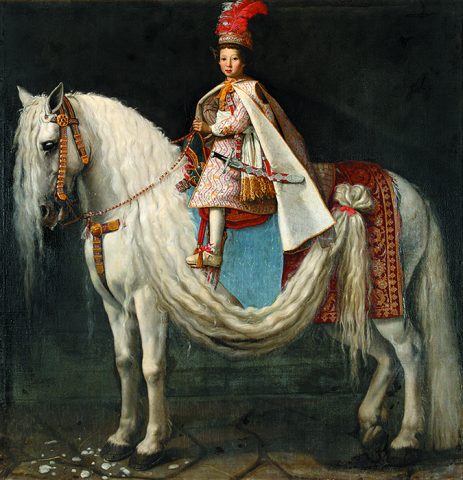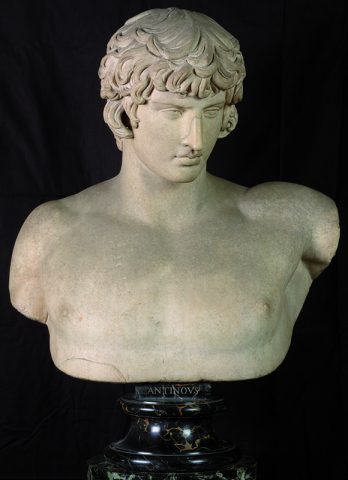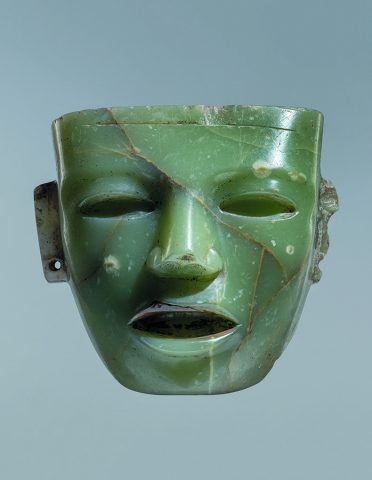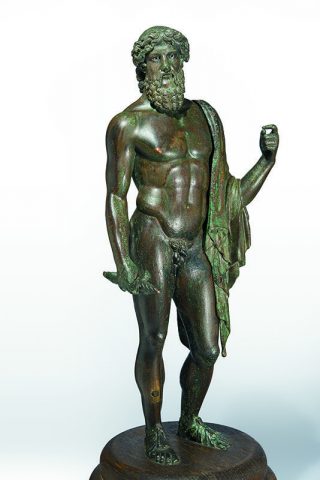Leopoldo de’ Medici art collection revives in Florence
Palazzo Pitti celebrates Leopoldo de’ Medici’s 400th birthday with a comprehensive exhibition dedicated to his extended art collection and sends a clear message to the art market.
- Giusto Suttermans, Leopoldo de’ Medici, young man riding a horse, 1624-1625 circa, oil on canvas, Benešov (Boemia centrale), Castle of Konopiště,
- Giovan Battista Gaulli, Portrait of Leopoldo de’ Medici as a Cardinal, 1668-1670 circa oil on canvas, Florence, Gallerie degli Uffizi.
- Roman art, Portrait of Antinoo, 130-136 BC, marble. h. cm 70, Florence, Gallerie degli Uffizi.
- Anonymous artist, Lithic mask from Teotihuacan (Mexico), IV-VI cent. AC., stone, Florence, Gallerie degli Uffizi.
- German workshop, Solar clock, 1600 circa, brass, Florence, Museo Galileo.
- Arab workshop, Astrolabe, XIII cent., brass, copper, silver, Florence, Museo Galileo.
- Roman art, Jupiter, 460-450 BC.), bronze, Florence, Museo Archeologico Nazionale.
- Tolemic art, Offering statue, III-I cent. BC. – XVII cent. AC, marble, h. 10,4 cm, Florence, Museo Archeologico Nazionale, Museo Egizio.
Leopoldo de’ Medici had a habit of collecting and spending hours secluded in his library studying history or the lives of the saints, “alone like a dog” as they say in these parts. Today’s collectors might not be familiar with him, but to mark the fourth centenary of his birth, he is being commemorated with an exhibition by Gallerie degli Uffizi in the Treasury of the Grand Dukes at Palazzo Pitti (until January 28, 2018) effectively titled Leopoldo de’ Medici, Prince of Collectors. Better known to us for his role as Cardinal, Prince “Cadet” Leopoldo de’ Medici only raised to the purple at the age of 50, eight years before his death. He spent the rest of his existence absorbed by more secular occupations that led to an extraordinary collection spanning the gamut from Ancient and Roman art to paintings, drawings and sculptures, coins, cameos, semiprecious stones, objets d’art, scientific instruments, books, exotica and natural rarities.
”One of the most voracious collectors in history, not just of Florence and of the Medici family but of Europe as a whole, the Cardinal was dominated by his all-enveloping passion for art,” writes the Director of Gallerie degli Uffizi, Eike D. Schmidt. “He was driven in his acquisitions by his visionary genius, which prompted him to explore whole new worlds in the collecting field and to display them with a very advanced feel for what a museum should look like.”
The son of Grand Duke Cosimo II and the Archduchess Maria Maddalena of Austria, he started putting together treasured possessions at the age of 23 with an already clear idea in mind of the final outcome. Leopoldo de’ Medici sent on the chase a number of agents in Rome, Venice and Northern Europe. And it is in the copious correspondence he had with them that we discover the degree of scrutiny each work underwent, resonating with his scrupulous and meditative nature.
Leopoldo is depicted at different stages of his life in the exhibition, with portraits, statuettes and a large sculpture by Giovan Battista Foggini that has been moved, after 45 years, from the Vasari Corridor to the entrance of Palazzo Pitti’s Treasury rooms. Indeed, he used to live on the second floor of the same palace, and the red taffetas lining details of the space is redolent of the tapestry that surrounded him in his chambers. Hung in the last room is the one particular little-known picture of him as a child by Justus Sustermans – all sumptuously clad in a Polish uniform and sitting on a horse, equally dressed up for a parade – that has become the poster image for the show. The works displayed, a restricted selection from his estate, duly reflect the eclecticism of the Cardinal’s taste. “He purchased not only pieces embodying the classical idea of beauty, like the Venus Caelestis, but also examples of iconographic uniqueness like the small Nuragic bronze that he loved precisely because it was different and pristine”, commented Schmidt at the opening of the exhibition. “Leopoldo de’ Medici is further proof that a collector needs a flawless eye, connoisseurship, but also balls,” adds the Director pointing at a big Romanic phallus with leonine feet that stands just near the Venus. As regards the rest, we shall confine the list to ivory sculptures by Johann Balthasar Stockamer, Japanese lacquer-ware, Chinese jades, nautilus cups mounted in silver, instruments that once belonged to Galileo Galilei, a very rare green mask from Teotihuacan dating back to the 4th or 6th century AD. In a way, collecting was a surrogate for exploration of faraway lands and cultures. Nor shall we omit to mention Leopoldo’s extensive gallery of self-portraits brought together in the attempt to trace a history of European art through its main players’ features, that was occupying an entire room of his apartments.
His studies, commitment and curiosity took him far beyond what we are used to consider the practice of collecting art today. Although collecting is much more an instinct than a will. Suffice it to say that the Cardinal was a “collector of words” too. Besides the mere fact he took part to Accademia della Crusca, he had a habit of keeping at his pleasure notebooks where he would mark down the record of new words: the research for the most chiselled, precise, incisive vocabulary to define the world around was restless and just another facet of his mind set.
A study in Leisure Sciences conducted by William D. McIntosh and Brandon Schmeichel titled Collectors and Collecting: A Social Psychological Perspective states: ‘There has been a recent surge in the number of people who collect’. It goes without saying, the horizon they are looking at is not necessarily the one of those bidding for the last Leonardo da Vinci on the market. It could be corks, it could be Elvis’ themed items, or the memorabilia of some broken love. ‘We define a collector a person who is motivated to accumulate a series of similar objects where the instrumental function of the objects is of secondary (or no) concern’. In The museum of innocence by Orhan Pamuk, the main character has visited by the time of his death 5,723 museums made up of private collections. He himself has spent half of his life gathering the souvenirs of a never fulfilled love for a woman called Füsun, with the goal to establish a museum as a definitive memento. But whatever the trigger, the authors of the study suggest that the motivations for collecting are reflected in the wide range list already offered in 1992 by Susan M. Pierce in his Musuems, objects, and collections: A cultural study. Pierce listed 17 reasons why, among them being leisure, aesthetics, risk, prestige, extending the self and achieving immortality (this one has been echoed by much literature that came after). McIntosh and Schmeichel specify that nearly all of them reflect self-fulfilling or self-enhancement needs. But said that, a trait we can see today is that despite the surge of collectors, very focused and specialized collections are prevailing, as much as the figure of the erudite – what Leopoldo de’ Medici was – is depleted.
The Cardinal passed away on November 10th 1675 and the inventory of his acquisitions took 20 years. Most of it joined the grand ducal collections and many pieces were designated by his nephew Cosimo III for the Gallerie degli Uffizi. His collection of artist’s self-portraits, that was back then one of a kind, is still one of the boasts of the Florentine museum. And for a happy coincidence, last September Michelangelo Cerquozzi’s Self-portrait in the studio has been auctioned by Pandolfini in Florence and finally entered the Uffizi collection. It was the one that the Cardinal tried to buy with no success.
November 25, 2020








